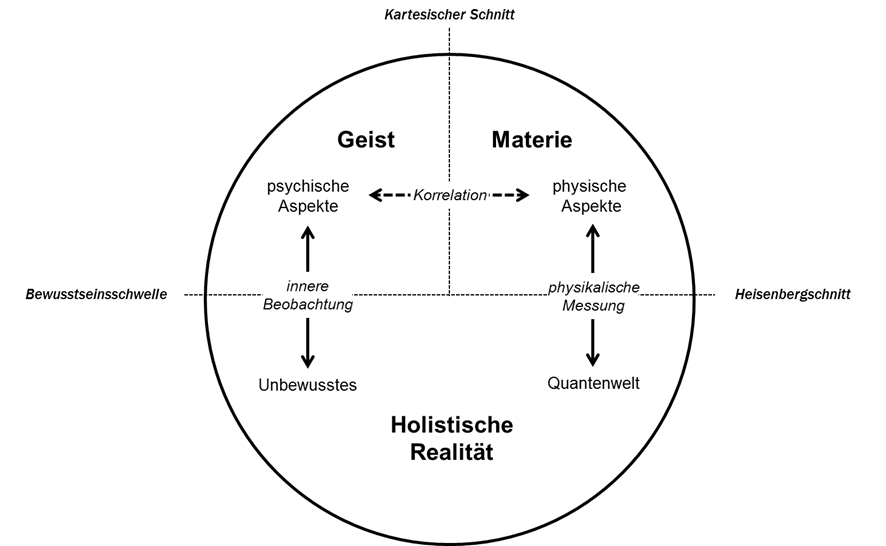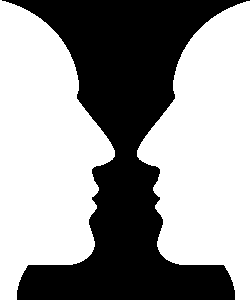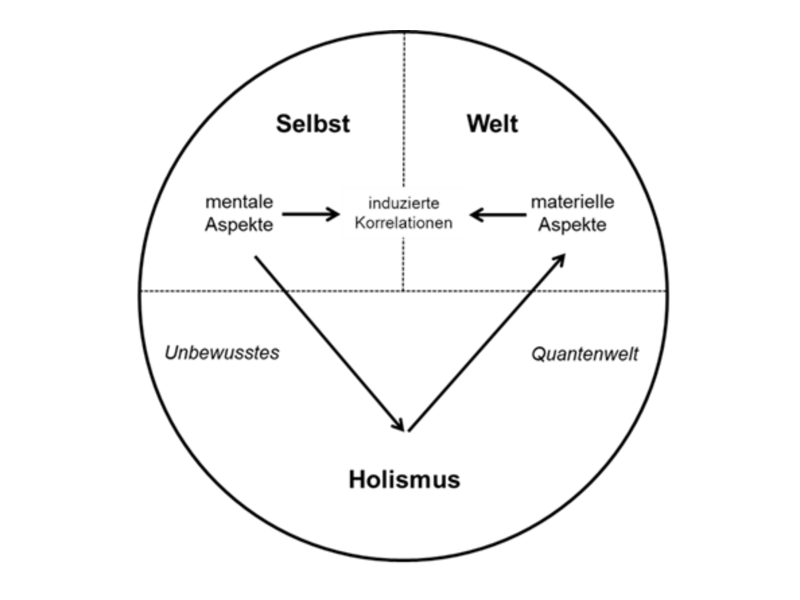Mind and Matter
States of consciousness and neuronal states correlate with each other, but the nature of these psychophysical correlations is still not understood. Brain research has not yet been able to provide any convincing theoretical or empirical evidence that mental states can be equated with neuronal states or causally attributed to them.
A promising alternative to physicalist explanations is dual-aspect monism, which sees mind and matter as complementary aspects of a psychophysically neutral reality. The idea of a latent wholeness that manifests itself in two ways is expressed, for example, in the Chinese yin-yang principle, whose symbolic representation was used by the famous physicist Niels Bohr in his personal coat of arms to illustrate the principle of complementarity. In European philosophy, an early approach to this direction of thought can be found in Spinoza, of which different variants have since developed (Atmanspacher, 2014; Atmanspacher & Rickles, 2022).
The “Pauli-Jung dialog” is particularly important for understanding exceptional phenomena and experiences (Atmanspacher & Fach, 2015, 2019; Fach, 2017): In the early 1930s, the depth psychologist Carl Gustav Jung used the term “synchronicity” to describe a principle in which “without a causal connection, the non-psychic can behave like the psychic et vice versa” (Jung, 1984, p. 57). Jung and the physicist and Nobel Prize laureate Wolfgang Pauli explored this possibility together in an exchange of letters up until the 1950s, incorporating concepts and ideas from quantum physics. They assumed that, analogous to the so-called Heisenberg cut in physics, in which previously non-existent objects and properties emerge with the measurement of a quantum system, mental “objects” such as thoughts and ideas emerge in the same way from an undifferentiated unconscious with their inner observation.
As illustrated in Figure 1, the threshold of consciousness and the Heisenberg cut characterize the symmetry break or the transition from a psychophysically neutral reality to an epistemic dualism of mental and material aspects. Under this assumption, there are no direct interactions, but only correlations between mind and matter, which are to be understood as complementary descriptions of the underlying wholeness (Fach, 2011, 2014).
“Complementarity” is an epistemological term for descriptions that simultaneously exclude and complement each other and are necessary for understanding a whole. In physics, complementarity refers in particular to the incompatibility of measured variables such as the momentum and location of a particle. The more precise the measurement of the momentum, for example, the less can be said about the location and vice versa. In wave-particle duality, the observation of one property completely excludes the observation of the other.
A common example to illustrate complementarity in the mental domain is the bistable perception of tilted images and the oscillation of figure-ground perception. When looking at the motif in Figure 2, one sees either a white vase or two black faces. The mental representations necessarily complement each other, because one aspect forms the background against which the other emerges, but both can never be seen at the same time.
Selected Projects
Literature
Atmanspacher, H. (2014). 20th century variants of dual-aspect thinking. Mind and Matter, 12(2), 245–288.
Atmanspacher, H. & Fach, W. (2015). Mind-matter correlations in dual-aspect monism according to Pauli and Jung. In E. F. Kelly, A. Crabtree & P. Marshall (Hrsg.), Beyond physicalism. Toward reconciliation of science and spirituality (S. 195–226). Lanham, MD: Rowman & Littlefield.
Atmanspacher, H. & Fach, W. (2019). Exceptional experiences of stable and unstable mental states, understood from a dual-aspect point of view. Philosophies, 4(1), 1–21. https://doi.org/10.3390/philosophies4010007
Atmanspacher, H. & Rickles, D. (2022). Dual-aspect monism and the deep structure of meaning. Milton: Taylor & Francis.
Fach, W. (2011). Phenomenological aspects of complementarity and entanglement in exceptional human experiences (ExE). Axiomathes, 21(2), 233–247. https://doi.org/10.1007/s10516-010-9143-7
Fach, W. (2014). Complementary aspects of mind-matter correlations in exceptional human experiences. In H. Atmanspacher & C. A. Fuchs (Hrsg.), The Pauli-Jung conjecture and its impact today (S. 255–273). Exeter: Springer.
Fach, W. (2017). Ein psychophysischer Modellansatz zum Verständnis außergewöhnlicher Erfahrungen. In L. Hofmann & P. Heise (Hrsg.), Spiritualität und spirituelle Krisen. Handbuch zu Theorie, Forschung und Praxis (S. 124–138). Stuttgart: Schattauer.
Jung, C. G. (1984). Archetyp und Unbewusstes (Grundwerk, Bd. 2). Olten: Walter.


